2024 Annual Report:
CCC Initiative connects Indiana colleges and their communities
In 2023, Lilly Endowment introduced College and Community Collaboration (CCC)—a new initiative to encourage Indiana colleges and universities to invite their local communities to create more vibrant places in which to live, learn, work, and play.
After two competitive rounds of grant funding, 19 Indiana colleges and universities have been awarded CCC grants ranging from $5.8 million to $35 million, totaling more than $448 million, to partially fund projects with significant potential to improve the quality of life and place on—and off—their campuses.
The CCC grants are supporting a wide range of aspirations. Some colleges and universities are focusing on revitalizing their college towns, while others are enhancing early childhood education and childcare services. Other higher education grantees are establishing new technology or business hubs to connect their academic programs with local businesses, while several are building or improving community gathering spaces for the performing arts, fitness and recreation.
The stakes are significant for colleges and universities. In addition to providing academic programs that will prepare their graduates for careers and life in Indiana and often far beyond, they are competing globally for students, staff and faculty.
A vibrant local community is increasingly important to these institutions in their efforts to attract and retain faculty, staff and students. According to Hanover College President Lake Lambert, prospective college students and their families expect amenities that enhance livability and prospective faculty also value community assets, such as high-quality schools and great parks.
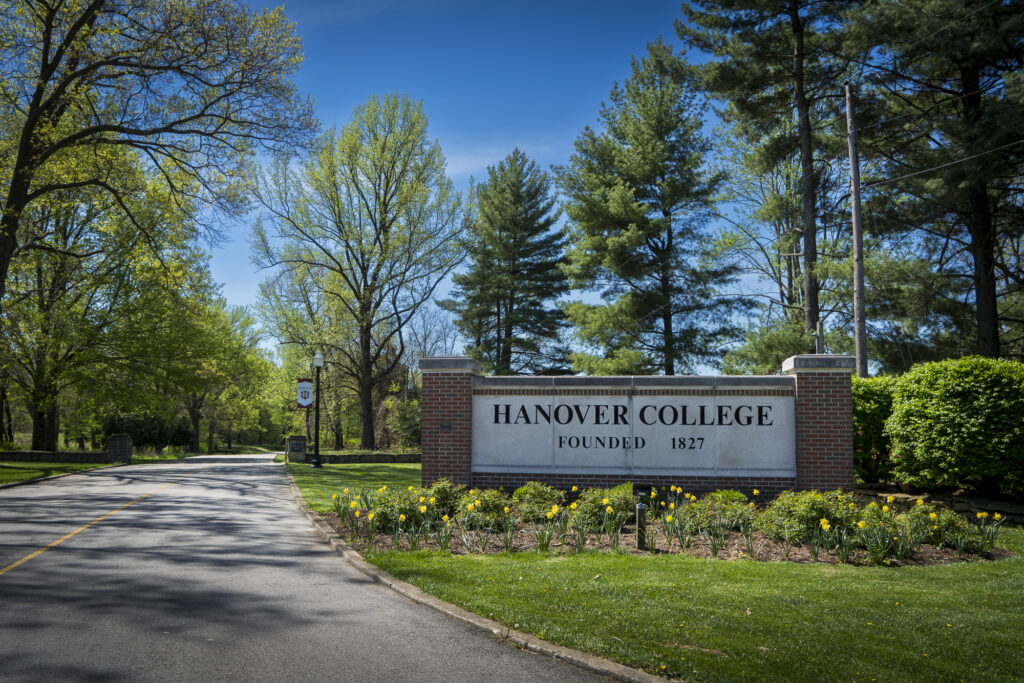
“Colleges are already facing many challenges these days,” Lambert said. “In an increasingly urban and suburban world, this is particularly true for colleges in rural areas like ours in southern Indiana where there are fewer amenities.”
He acknowledges that enhancing parks, trails and indoor recreation facilities and encouraging the development of attractive, walkable towns with coffee shops, retail outlets, and restaurants, seem to fall outside the core mission of educating students in the classroom.
“But without addressing those issues, fulfilling our core mission is difficult, if not impossible,” Lambert said.
To help them identify and assess significant needs and promising opportunities within their communities, in the first phase of the CCC initiative the Endowment awarded planning grants totaling nearly $10 million to all participating Indiana colleges and universities. Schools used the grants to engage broadly with their local communities as they prepared and designed projects that offered innovative approaches to address campus and community needs and opportunities.
In the second phase of the initiative, which was competitive, colleges and universities could request from the Endowment partial funding to support their comprehensive project plans. To be competitive in this phase, colleges and universities had to identify and describe credible sources of revenue to support and sustain the entire project. They were tasked with demonstrating that at least 70 percent of the overall project cost could be identified and secured from sources other than the Endowment (e.g., government, business, investment capital, philanthropy and the college or university itself).
The resulting CCC implementation grants, awarded in two competitive rounds of funding in 2023 and 2024, support strong collaborations with residents, civic leaders, businesses and other community stakeholders to shape and implement projects that show promise to significantly enhance quality of life and place on their campuses and in their communities.
Now, these plans are becoming a reality. At Ball State University in Muncie, Ind., construction cranes and earth-moving equipment are already hard at work on the edge of campus, where an ambitious, long-term plan to revitalize The Village, the commercial district adjacent to the campus, is underway.
Geoffrey Mearns, president of Ball State University, can observe progress at the construction site from the lot where he parks his car each day.
“Seeing that construction commence and continue is exciting,” he said. “But for me, what has been equally gratifying is that we have demonstrated significant community benefit and cooperation.”
Collective Village Vision
Since the 1980s and 1990s, industrial towns like Muncie have seen a decline in population and faced challenges due to a shrinking tax and business base. In recent years, Muncie has invested in its downtown area and made a noticeable impact, but according to Mearns, there’s still work to be done.
When Mearns arrived on campus in 2017 to take on the role of university president, he observed that although the Ball State campus was “beautiful,” the nearby Village commercial district appeared “rather bleak.” The university had recognized the area as part of its long-term strategic planning and started acquiring property as it became available.
Mearns said the CCC initiative arrived at an ideal time for Ball State. For several years, the university has been developing plans for The Village in partnership with elected officials in Muncie and Delaware County and two private development partners.
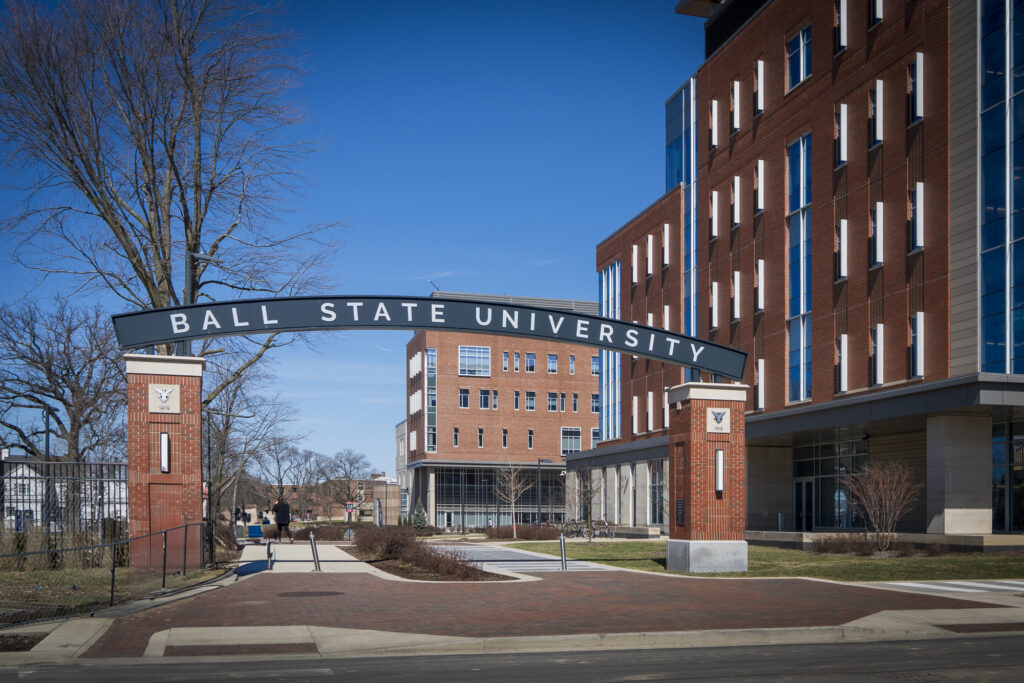
In the first round of CCC implementation grants, Ball State received a $35 million grant to partially support its long-term project to revitalize The Village. The project includes the design and construction of various new facilities and amenities, such as a performing arts center, an events plaza, a hotel, restaurants, and retail establishments, with Barnes & Noble serving as an anchor. An apartment complex and new single-family homes will also offer much-needed housing options for Ball State faculty and staff, as well as Muncie professionals and their families.
Another new space is an “innovation center” that will connect university academic programs with local entrepreneurs, technology, and business professionals and provide space for potential partnerships with civic organizations, including the Muncie Chamber of Commerce and the Muncie-Delaware County Black Chamber of Commerce.
Collaboration drives sustainable growth and opportunity, according to Jason Walker, president of the Black Chamber.
“This partnership reflects a collective vision for a stronger, more inclusive Muncie, where businesses from all backgrounds have the support they need to succeed,” Walker said. “We look forward to this initiative’s lasting impact on our local economy and the next generation of entrepreneurs.”
According to Mayor Dan Ridenour, Muncie’s elected officials and other community leaders have embraced the projects and have been active partners. The new hotel is especially important as Muncie has maxed out its hotel space, and a new and improved trail has been a project that the city has wanted to complete for years, Ridenour said.
The city allocated more than $5 million in infrastructure funding to support development, and city and university officials hold regular meetings to discuss plans and progress. According to Ridenour, the CCC grant has strengthened a shared understanding that the city and university’s destinies are linked closely together.
“We’re very excited about what Ball State is doing in The Village,” he said. “From our standpoint, Ball State is our largest and most stable employer. Our question is always, ‘How can we help them be more successful?’ We’re pleased with that relationship.”
The Endowment’s CCC initiative is an important investment for Ball State and the region, which has seen some hard times, according to Mearns. Now, there’s a sense of optimism about a different future.
“It’s proof that we can accomplish great things and that the next 25 years don’t have to mirror the past 25 years,” he said. “We can take on major projects and make a difference.”
Bridging the Distance
For 150 years, Rose-Hulman Institute of Technology has been a fixture on the east side of Terre Haute, Ind., six miles from the city’s center.
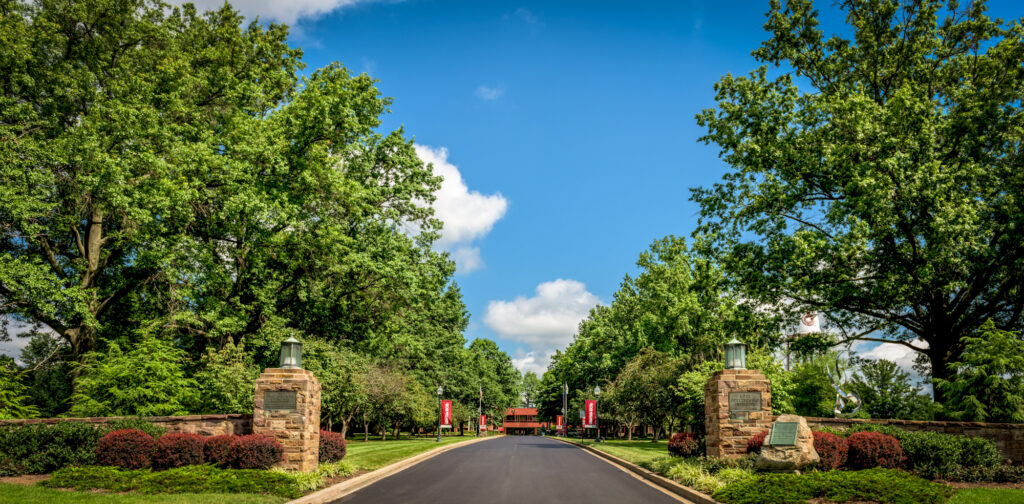
According to Rose-Hulman President Robert Coons, students, staff and faculty have actively engaged over the years with the broader Terre Haute community through various service projects and events. Most staff and faculty members live in Terre Haute and send their children to local schools, including Coons, who arrived at Rose-Hulman in 1989, raised a family there, and praises the area as a great place to live and work.
Yet, during the 2023 planning phase of the CCC initiative, Coons became convinced that the college’s connection to the community could be more intentional.
“I think we’ve always been well-regarded by the Terre Haute community, but there’s always been a sense of distance that seemed greater than just the five to six miles to campus,” said Coons. “What I appreciate from Lilly Endowment is that they asked us to reflect on what more we could do to enhance our collaboration with the community.”
After intensive work during the CCC initiative’s planning phase, Rose-Hulman received a $30.5 million grant to support its Trails to Innovation project.
The project involves developing Innovation Grove, a new entrepreneurial district aimed at fostering innovation, collaboration, and economic growth for the Wabash Valley region and beyond. Among its many goals, the project brings Rose-Hulman Ventures, an engineering consulting and technology design and development entity with a student experiential learning program, closer to campus and in a more convenient location for Rose-Hulman students.
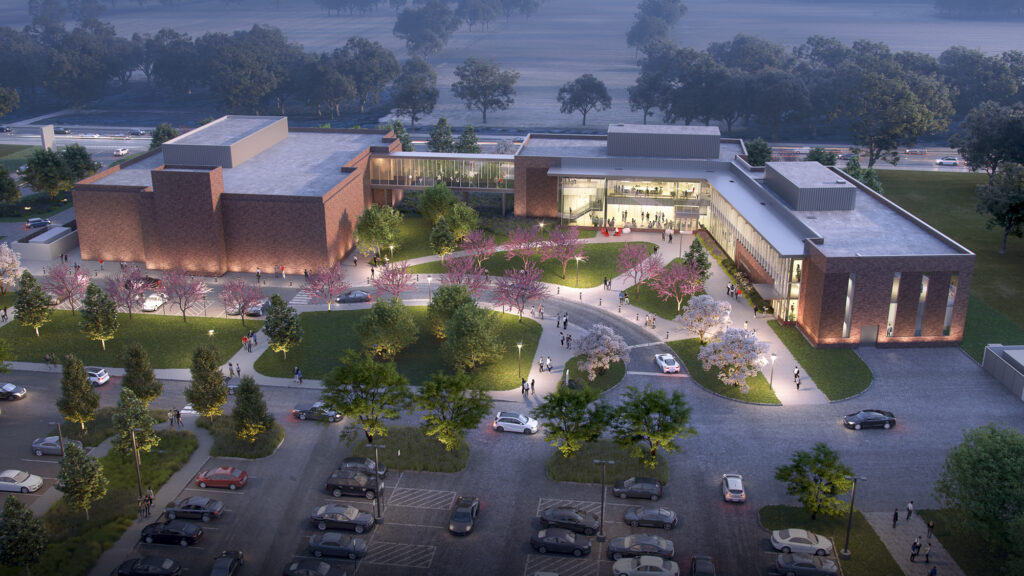
Artist rendering of Innovation Grove
Innovation Grove will also feature a STEM and robotics education program operated in collaboration with Vigo County School Corporation, as well as a state-of-the-art surgical center for hip and knee replacements, operated in partnership with Union Health and the Indiana Joint Replacement Institute. Through Rose-Hulman’s Sawmill Society, entrepreneurial alumni and supporters have gathered to share insights and experiences. Soon, members of the society and others will have a space to collaborate, providing yet another opportunity for students to find mentors and employment opportunities with emerging innovators. A community advisory group has been organized to help inform overall grant implementation of the Innovation Grove project and help bridge communications between the college and the community.
The Endowment grant is supporting construction of one of the buildings within Innovation Grove. The grant is also helping to fund a new solar farm to power the district and support Rose-Hulman’s sustainability goals.
Another portion of the grant is designated for the Innovation Trail, a network of pathways, including a bridge, to link Innovation Grove to existing trails and parks in Terre Haute. The aim is to literally bridge the distance between Rose-Hulman and Terre Haute, Coons said.
“I believe the Terre Haute community has always taken pride in us, but this is our first chance for truly collaborative efforts,” he noted. “We’re really excited about that. We understand that as our institution thrives, so does our community.”
In a Small College Town, Big Plans
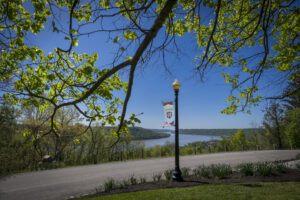 Henry “Chip” Snyder came to Hanover College as a freshman in the mid-1980s from his hometown of Louisville, Ky. Years later, Snyder says he is still struck by the college’s stunning view of the Ohio River, its classic Federal-style buildings, and the private college’s tranquil setting in rural Jefferson County, Indiana.
Henry “Chip” Snyder came to Hanover College as a freshman in the mid-1980s from his hometown of Louisville, Ky. Years later, Snyder says he is still struck by the college’s stunning view of the Ohio River, its classic Federal-style buildings, and the private college’s tranquil setting in rural Jefferson County, Indiana.
“It’s just the Platonic ideal of a liberal arts college,” Snyder says. “This is an atmosphere to read, discuss and reflect on big ideas without big city distractions.”
Snyder, who returned to his alma mater in 2023 after a career in banking to lead the college’s community relations efforts, says Hanover—the college and the town—could benefit from a few more “distractions,” as a pedestrian-friendly destination for residents, students, faculty, and visitors.
That’s the thinking behind Jefferson Together, a development project partially supported by a $30 million CCC grant awarded in 2024 during the second and final round of funding for the CCC initiative. Jefferson Together will begin to address the economic, social, cultural, and connectivity needs of Jefferson County residents and enhance the region’s attractiveness to potential residents, businesses, students, and investors.
Hanover College is Indiana’s oldest college, founded in 1827, and the town of Hanover, population 3,814, predates it. Through nearly two centuries, the relationship between the college and the town has occasionally been strained, but stronger ties between these communities will improve the relationship, drive economic growth and enhance the quality of life for residents, according to Lambert, who has served as president of the college since 2015.
“We’re very excited about the future and what [Jefferson Together] will bring to and do for the community and Hanover College,” Lambert added.
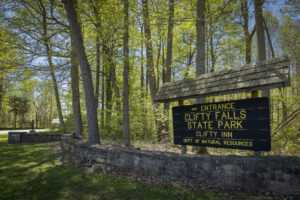 The CCC grant will help support new streetscapes and sidewalks on Main Street and Madison Avenue to connect Hanover’s “hidden gem” of a municipal park and improve its recreation spaces, laying the foundation for future growth and development in the town of Hanover, Snyder said. Plans for a multi-million dollar trail to connect the Hanover College campus to one of the region’s greatest natural resources, Clifty Falls State Park, are in the works.
The CCC grant will help support new streetscapes and sidewalks on Main Street and Madison Avenue to connect Hanover’s “hidden gem” of a municipal park and improve its recreation spaces, laying the foundation for future growth and development in the town of Hanover, Snyder said. Plans for a multi-million dollar trail to connect the Hanover College campus to one of the region’s greatest natural resources, Clifty Falls State Park, are in the works.
Historic preservation is also trending in Hanover, according to Greg Sekula, director of Indiana Landmarks’ Southern Regional Office.
Work is underway to renovate a historic property at 119 N. Madison Ave. in Hanover. When the house is completed, it will be sold, with proceeds going back to the community to help fund additional preservation efforts.
It’s a good example of new efforts to preserve the old character of neighborhood housing and then infill with more development that complements the Jefferson Together projects, Sekula said. The town’s main streets and the entrance to campus are slated for improvement, and a community garden is in the planning stages. All are projects that will have support and momentum thanks to Jefferson Together, he said. A community panel is harnessing that momentum as it helps implement Jefferson Together and ancillary projects.
In a town that has previously lacked the resources for community planning, funding of these new efforts could be transformative, Sekula said. “The goal is to create a better quality of life for everyone.”
CCC is a competitive initiative designed to encourage the schools to work closely with community stakeholders to envision and jointly undertake significant community development efforts to create more vibrant places in which to live, learn, work and play.